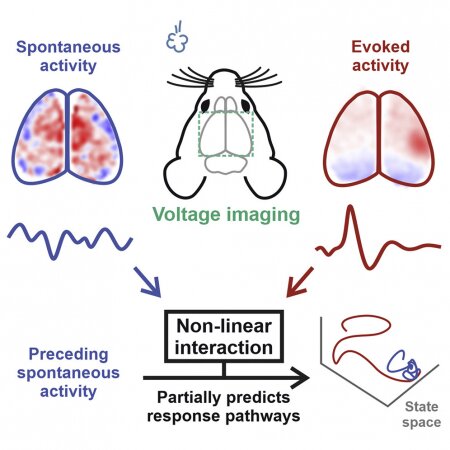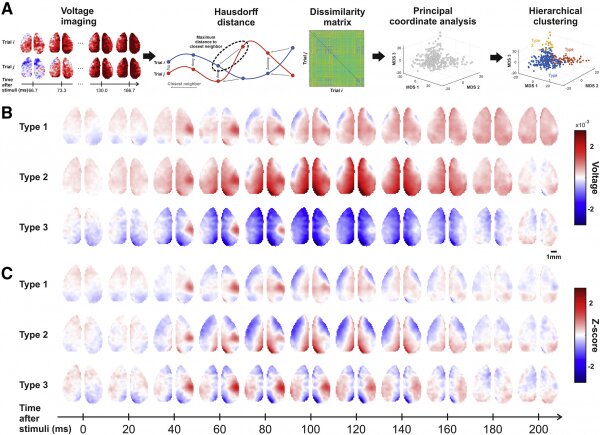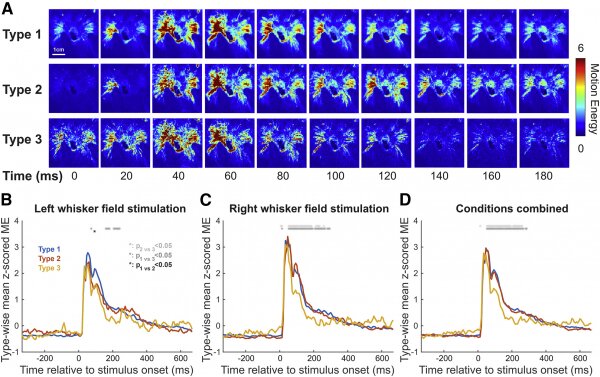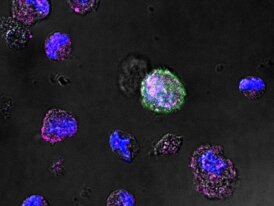
Interdisciplinary research collaboration reveals the complex interactions between spontaneous activity and sensory-evoked activity in the brain
The environments are filled with sensory stimuli that sometimes can easily be perceived and acted on, but sometimes not. Existing theories such as predictive coding suggest that our brains spontaneously maintain a mental model of the outer environment based on which predictions of sensory input are encoded in the current brain activity state to facilitate quick and precise responses. However, there is no consensus to the nature of the variability in our sensory processing and how it is related to spontaneous activity.

A recent interdisciplinary research collaboration between Professor Changsong Zhou’s team from the Department of Physics of Hong Kong Baptist University (HKBU) and Professor Thomas Knöpfel’s Laboratory for Neuronal Circuit Dynamics at Imperial College London (now Hornary Professor at the Department of Physics and STEM Professorship Awardee) reveals how spontaneous electrical brain waves influence the processing of sensory information and behavior at the cortex-wide scale. The work highlights the fluctuating spontaneous activity of the brain is much more than just “noise” but has an intricate impact on the processing of information about the external environment. The findings have recently been published in a paper entitled "Cortex-wide spontaneous activity non-linearly steers propagating sensory-evoked activity in awake mice" in Cell Reports, a prestigious open access biological journal. Physics PhD graduate Dr. Mianxin Liu and Dr. Yuqi Liang of HKBU and Dr. Chenchen Song of Imperial College London are co-first authors of this work.
In this research, the team used real-time optical imaging data to study how electrical activities from upper layers of the mouse cerebral cortex changes as the mice received controlled sensory input in the form of a brief air puff to their whiskers. Through analyzing the electrical activities triggered by the air puff, the team observed that the stimulus triggers an initial response that rapidly propagates across the cortex and that - despite identical whisker stimuli - the sensory-evoked propagating signals exhibit variations from trial to trial. The study revealed three typical and distinct pathways for this propagation, which are related to the behavior outcome of the mice as expressed by their facial expressions. Using deep learning, the team proved that the propagating pathways are partially predictable by the pre-stimulus spontaneous activity in the given trial.
After dimensionality reduction, the evoked responses were associated with a reduced volume of occupied state space, altered temporal autocorrelation in cortical activity pattern evolution and a departure from the state-space volume occupied by spontaneous activity. This provides evidence for complex interactions between spontaneous and sensory-evoked activities, such that sensory-evoked activities are not just merely added on top of ongoing activities in the brain.
This interdisciplinary collaborative research combines computational analysis based on dynamical system theory and real-time optical voltage imaging experiments to provide a mechanistic underpinning of the variabilities in perception and behavior. The study offers insights into the non-linear dynamical interactions between representations of external and internal cortical information and advances understanding of the neuronal code. The roles of spontaneous activities may also be a crucial aspect currently being neglected by prevalent artificial intelligence studies.
Contact Our Researcher
DEPARTMENT OF PHYSICS
Related Publication
- Cortex-wide spontaneous activity non-linearly steers propagating sensory-evoked activity in awake mice (2022) Cell Reports Volume 41, Issue 10, 111740 https://doi.org/10.1016/j.celrep.2022.111740






